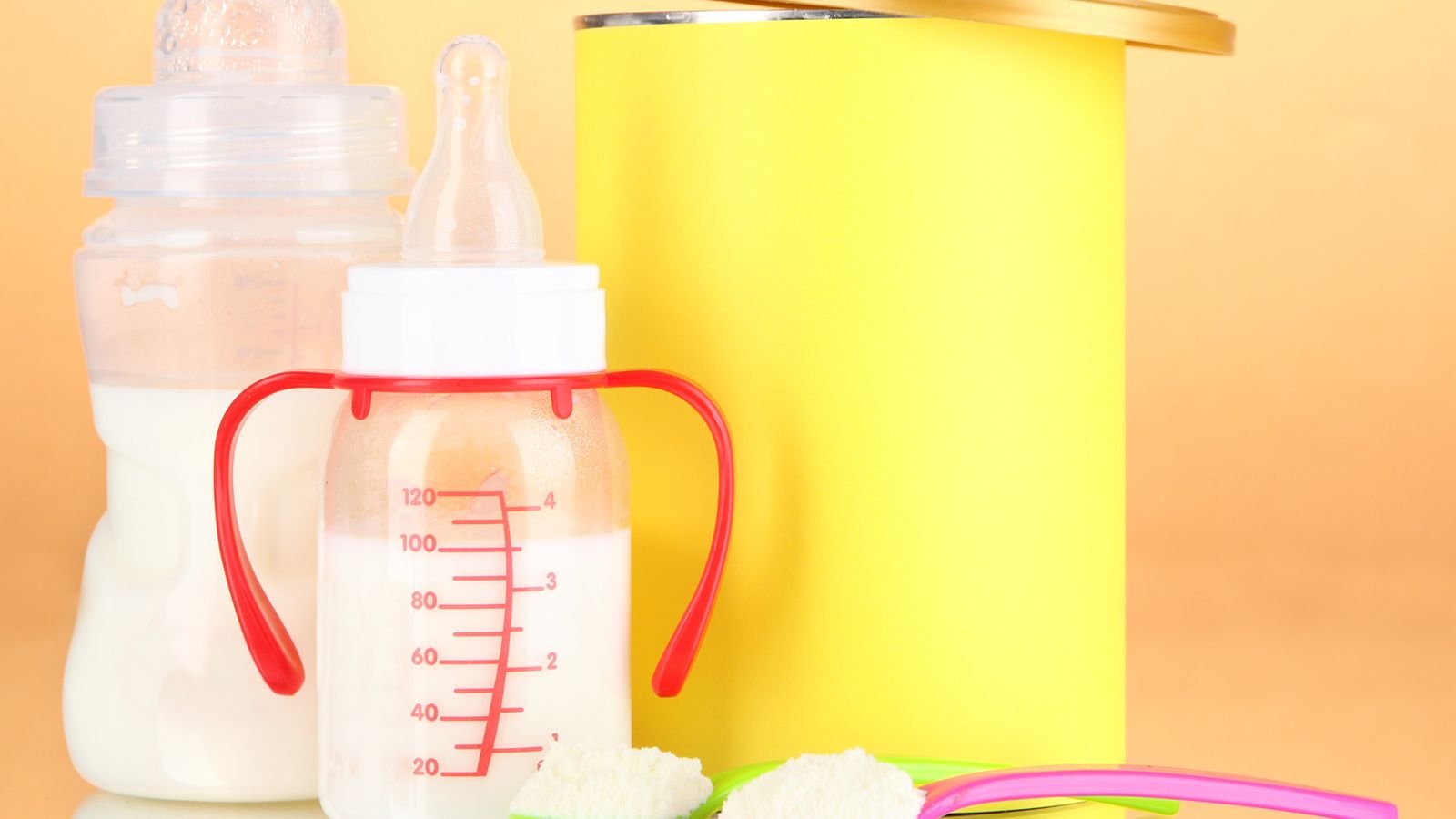
You'll sometimes have to trust your instincts when it comes to feeding your baby formula. A mathematical calculation to figure out amounts for feeding is nice, but keep in mind that every baby is different. As a mom, you'll want to pay close attention to your baby's hunger cues. Watch for extra fussiness or your baby sucking on her fists or clothing. These are good cues that your baby is hungry, and she might give you these signs even if you're closely following a "formula" for formula.
Calculating Formula Needs
To calculate how much formula your baby needs, multiply her weight by 2, and also by 2.5. These are the upper and lower ranges for how many ounces of formula a baby (six months or under) needs in 24 hours. For example, an 8-pound baby would need between 16 and 20 ounces of formula per day (always round numbers up). You can divide that number by the number of feedings per day to figure out the amount of formula to give in each bottle.
If you'd rather not do the math, we have a handy formula feeding calculator here at JustMommies.

How Much and How Often?
In a perfect world, you'd be able to space the feedings out at perfect intervals around the clock. For some babies, that actually works part of the time. In most cases, however, you still have to rely on hunger cues. The best rule of thumb for newborns is to feed smaller amounts more frequently. Newborns have tiny stomachs, so they can only take in small amounts at each feeding. At the same time, they have really high metabolisms because they're growing so rapidly for the first few months, so the feedings might be more frequent (6 to 8 feedings per day).
Feeding size should double from 1 month to 2 months of age, because your baby's stomach will be bigger and she'll be growing that much faster. You'll be feeding approximately 1 to 2 ounces of formula at each meal during the first month, and 3 to 4 ounces during the 1-month to 2-month stage. This will increase slightly from 2 to 6 months of age (4 to 6 ounces of formula). From 6 months to a year, you'll be feeding 6 to 8 ounces of formula, which will also be supplemented with real foods.
Again, keep in mind that these are only guidelines. Your baby will be hungrier at times when she's going through a growth spurt or when she starts teething. Follow the hunger cues.

Overfeeding and Underfeeding
Watch for wet diapers! If the number of wet diapers decreases, your baby might not be getting enough formula at each feeding. If she starts sleeping more than normal, if her skin gets more wrinkly, or if she's crying more than normal, you might have to increase formula amounts.
Babies that are overfed will start to spit up shortly after feedings. This may be accompanied by crying or signs of stomach discomfort (pulling her knees up to her tummy). Reduce the amount of formula at each feeding to see how she responds.
